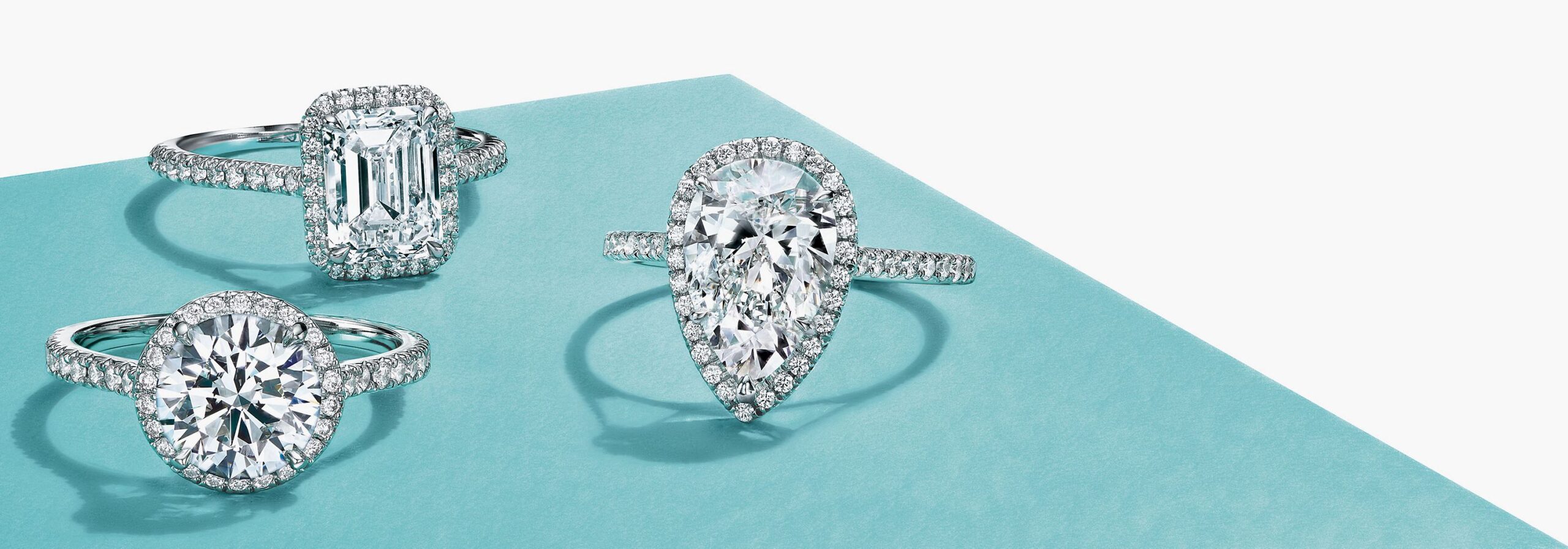
Diamond shapes are a type of gemstone cut that is commonly used to adorn jewelry and other items. Diamonds come in a variety of different shapes, each with its unique characteristics and appeal. Round diamonds are the most popular shape, followed by princess, cushion, oval, and emerald cuts. Marquise and radiant-cut diamonds are popular choices for those seeking more intricate designs. The cut of a diamond affects the way it sparkles and reflects light, as well as its overall appearance.
Round Diamond Cuts: Round diamonds are the most popular shape of a diamond and have become a symbol of timeless sophistication. They feature 58 facets that allow for maximum brilliance and sparkle. Round-cut diamonds can create many types of jewelry, including solitaire rings, engagement rings, earrings, and pendants.
Princess Cuts: Princess cuts are one of the most popular diamond shapes today due to their distinct square cut with pointed corners. Its unique shape adds an element of modern glamour wherever it’s worn. Princess cuts often feature 57 or 58 facets for shine and sparkle.
Cushion Cuts: Cushion cuts feature soft rounded edges that provide a vintage look and feel that looks stunning when set in jewelry. They feature 58 facets, and their soft edges allow for more brilliance than princess cuts. Cushion-cut diamonds are often used to create modern halo designs, allowing for a larger look without the higher price tag.
Oval Diamonds: Oval diamonds combine the classic look of round diamonds with an elongated shape that adds an additional touch of elegance and sophistication. Its 58 facets capture light from all angles, resulting in maximum sparkle and shine whenever it’s worn.
Emerald Cuts: Emerald cuts feature rectangular-shaped faces that provide a unique contrast between light and dark areas when viewed from different angles. Its 57 facets reflect light off its smooth surface, creating a mesmerizing effect as you move.
Marquise Cuts: Marquise cuts are often referred to as “football-shaped” diamonds due to their distinctive shape. They feature 58 facets and create an illusion of greater size than other diamond shapes with the same carat weight.
Radiant Cuts: Radiant cuts are modified square cuts that combine both round and rectangular shapes for maximum sparkle. It features 70 facets, allowing light to reflect off each side for exceptional shine and brilliance.
Pear Cuts: Pear cuts have a distinct teardrop shape that can create stunning jewelry pieces. Pear-shaped diamonds have 58 facets, and their unique shape allows for increased brilliance whenever worn.
Heart: Heart-shaped diamonds are one of the most romantic and unique diamond shapes available. Heart-cut diamonds feature 58 facets and provide maximum sparkle with their symmetrical shape.
No matter what diamond shape you choose, it’s important to remember that a diamond’s cut is just as important as its color and clarity when determining the stone’s overall beauty and value. Before making your purchase, ensure you understand each diamond shape’s different aspects to choose one that best suits your needs. Here are thirty things to consider before buying a diamond.
1. Determine your budget for the diamond
2. Choose a certification from an independent laboratory
3. Select a cut grade (ideally excellent or very good)
4. Consider a higher color and clarity grade if you have the budget for it
5. Consider the carat weight, shape, and size of the diamond
6. Understand how light reflects off different shapes of diamonds
7. Consider purchasing a loose stone or one that’s already set in jewelry
8. Learn about fluorescence and its effect on diamond value
9. Compare prices online to find the best deal possible
10. Look into buying conflict-free, lab-grown diamonds if you’re looking for a more affordable option
11. Educate yourself on the 4Cs of diamonds – color, clarity, cut, and carat weight
12. Choose a reputable jeweler you trust to purchase your diamond from
13. Look into special offers such as financing or discounts if available
14. Ask about insurance coverage for your diamond in case something should happen to it
15. Familiarize yourself with any return policies associated with the purchase
16. Consider purchasing a diamond that’s already been graded by an independent laboratory
17. Make sure you understand all fees associated with shipping, insurance, and taxes before making your purchase
18. Understand how light reflects off different shapes of diamonds
19. Research the differences between natural and lab-created diamonds
20. Research different cuts of diamonds to determine which one is best for your needs
21. Know what type of setting works best with the shape you’ve chosen
22. Have a general understanding of how diamond pricing works
23. Make sure to read customer reviews before making a purchase
24. Ask questions about any warranties that may be associated with your diamond
25. Check if upgrades or trade-ins are available on the loose stone you’re purchasing
26. Consider shopping around for different vendors if you can’t find what you want in store
27. Learn more about ethical and conscious sourcing practices
28. Ask about the origin of your diamond and its source before making a purchase
29. Ensure that the vendor has enough knowledge to answer all of your questions
30. Make sure you understand the entire buying process before committing to any purchase
By taking the time to consider all these factors, you’ll be able to make an informed decision when it comes time to purchase a diamond. No matter what shape or size you choose, always remember that choosing a diamond is an investment in yourself and your future – make sure it’s one that you can feel good about for years to come!



Leave a Reply